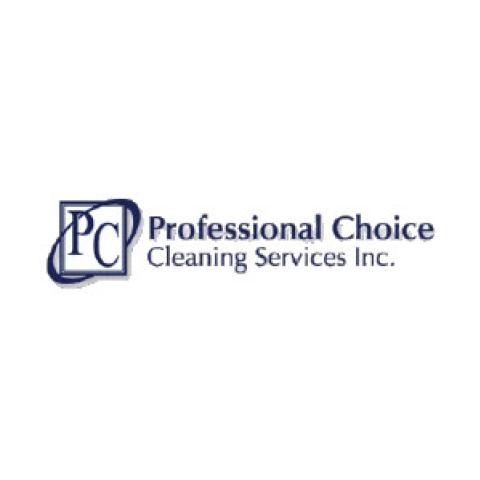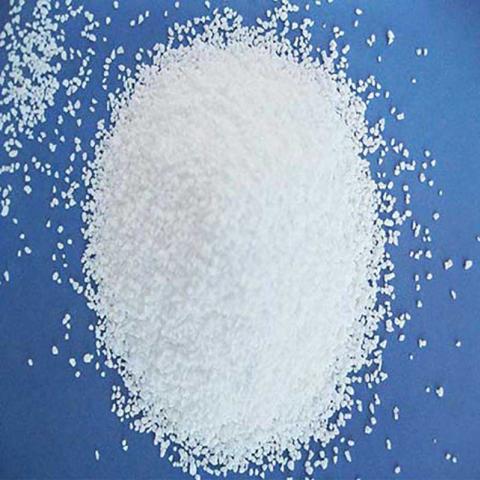The global Nickel Hydroxide Market is poised for remarkable growth over the coming years, according to a detailed analysis by Kings Research. This comprehensive report sheds light on key market dynamics, emerging trends, demand patterns, and future outlooks, offering valuable insights into the competitive landscape, recent developments, and regional opportunities. With its wide-ranging applications in batteries, electroplating, and catalysts, nickel hydroxide is a critical material driving growth across several industries.
Market Overview
Nickel hydroxide is an inorganic compound with the formula Ni(OH)₂, primarily used in rechargeable batteries, particularly in nickel-cadmium (NiCd) and nickel-metal hydride (NiMH) batteries. Its applications extend beyond energy storage to various sectors, including electroplating, chemical synthesis, and catalysis. As industries shift towards sustainable and clean energy solutions, the demand for nickel hydroxide has risen sharply, particularly in battery manufacturing.
Global Nickel Hydroxide Market size was recorded at USD 311.4 million in 2023, which is estimated to be at USD 329.8 million in 2024 and projected to reach USD 522.0 million by 2031, growing at a CAGR of 6.78% from 2024 to 2031. In the scope of work, the report includes solutions offered by companies such as American Elements, GFS Chemicals, Inc., Nippy Chemicals., KANSAI CATALYST Co., Ltd., Tanaka Chemical Corporation, Umicore, Sumitomo Metal Mining Co., Ltd., Merck KGaA, Kelong, Jilin Jien, and others.
According to Kings Research, the Nickel Hydroxide Market is expected to grow at a robust rate over the forecast period (2024-2032), driven by increasing demand for batteries in electric vehicles (EVs) and consumer electronics. Additionally, advancements in battery technology, along with the ongoing transition towards renewable energy, have further propelled market demand.
Key Market Trends
The Nickel Hydroxide Market is undergoing significant transformations, primarily fueled by the growing emphasis on clean energy technologies and the surge in electric vehicle production. Several key trends are shaping the market's future:
Rising Demand for Electric Vehicles (EVs): The automotive industry is increasingly embracing electric vehicles as part of its strategy to reduce carbon emissions and meet global sustainability goals. Nickel hydroxide, a key component in NiMH batteries, is widely used in EVs. The rising adoption of EVs globally is anticipated to drive up demand for nickel hydroxide, creating a positive growth trajectory for the market.
Energy Storage Applications: The need for efficient energy storage solutions is becoming critical as more renewable energy sources, such as wind and solar, are integrated into power grids. Nickel hydroxide-based batteries provide a reliable storage option for renewable energy, and their use is likely to expand as countries focus on reducing reliance on fossil fuels.
Advancements in Battery Technology: Technological advancements in battery design and performance are enhancing the efficiency of nickel hydroxide batteries. Innovations in manufacturing processes and materials are improving battery capacity, energy density, and longevity, which in turn is driving the demand for nickel hydroxide.
Growth in Consumer Electronics: The demand for nickel hydroxide batteries is also driven by the consumer electronics market, which includes smartphones, laptops, cameras, and other portable devices. With a constant need for compact, high-performance batteries, the consumer electronics industry continues to be a significant contributor to market demand.
Demand Drivers and Market Dynamics
The increasing focus on renewable energy sources and the global transition towards decarbonization are major factors driving the demand for nickel hydroxide. Several market dynamics are contributing to the overall growth:
Sustainability Initiatives: Governments and private enterprises are investing heavily in renewable energy projects and electric mobility initiatives to meet international climate targets. Nickel hydroxide is a key enabler in these sectors due to its role in energy storage and power management. As a result, the demand for nickel hydroxide in energy storage and EV batteries is likely to experience sustained growth.
Battery Recycling: The growing emphasis on battery recycling and the circular economy is influencing the Nickel Hydroxide Market. Recycling programs for NiMH and NiCd batteries are being developed globally, allowing the extraction and reuse of valuable nickel hydroxide. This trend is expected to create additional opportunities for market growth while contributing to environmental sustainability.
Rising Energy Consumption: The increasing global population, along with industrialization and urbanization, is leading to higher energy consumption. This, in turn, is driving the demand for efficient battery systems, such as nickel hydroxide batteries, to store and distribute power effectively. As energy demand continues to rise, nickel hydroxide will remain a critical component in meeting global energy needs.
Raw Material Supply Chain: Despite the robust demand, the availability and supply chain of nickel hydroxide and its raw materials may pose challenges. Nickel, a key raw material in the production of nickel hydroxide, has witnessed price fluctuations due to supply disruptions, geopolitical tensions, and growing competition for resources. These factors could impact the production cost and market price of nickel hydroxide.
Future Outlook
The future outlook for the Nickel Hydroxide Market remains optimistic, driven by several macroeconomic and industry-specific factors. According to Kings Research, the market is set to witness strong growth in the coming decade, particularly in Asia-Pacific, where industrial activity, coupled with increasing investments in renewable energy and electric mobility, is driving demand.
Electric Vehicles: The global shift towards electric vehicles presents one of the most promising growth avenues for the Nickel Hydroxide Market. As automakers ramp up production of EVs, the need for high-performance, durable batteries will fuel demand for nickel hydroxide. Additionally, governments are offering incentives and subsidies to accelerate EV adoption, further boosting market growth.
Energy Storage Innovations: As energy storage technologies continue to evolve, nickel hydroxide-based batteries are expected to play a key role in providing reliable and scalable energy storage solutions. Advances in battery chemistry and manufacturing processes will likely reduce production costs, making nickel hydroxide batteries more accessible and appealing for large-scale applications.
Sustainable Manufacturing Practices: Companies are increasingly adopting sustainable manufacturing practices to minimize their environmental impact. This includes the recycling of nickel hydroxide from spent batteries, reducing waste, and lowering the overall environmental footprint of battery production. These initiatives align with global efforts to promote sustainability and are expected to contribute to long-term market growth.
Regional Growth: The Asia-Pacific region is projected to dominate the Nickel Hydroxide Market, accounting for the largest share of market revenue. Countries like China, Japan, and South Korea are leading the charge in electric vehicle production, battery manufacturing, and renewable energy projects. Moreover, North America and Europe are expected to witness substantial growth due to the increasing adoption of EVs and energy storage solutions.
Key Market Players
The Nickel Hydroxide Market is highly competitive, with several key players actively involved in research, development, and production. Some of the major companies operating in the market include:
Sumitomo Metal Mining Co., Ltd.: A leading producer of nickel-based materials, Sumitomo Metal Mining is known for its advancements in battery materials, including nickel hydroxide for rechargeable batteries.
Norilsk Nickel: One of the largest nickel producers globally, Norilsk Nickel is a significant player in the Nickel Hydroxide Market, supplying raw materials for battery production and other industrial applications.
American Elements: A prominent supplier of advanced materials, American Elements produces high-purity nickel hydroxide for a wide range of applications, including battery manufacturing and chemical synthesis.
Jilin Jien Nickel Industry Co., Ltd.: This China-based company is a key player in the nickel market, with a focus on nickel hydroxide production for the battery industry.
Shepherd Chemical Company: Specializing in metal-based chemicals, Shepherd Chemical Company provides nickel hydroxide for use in batteries and catalysts.
These players are focusing on expanding their production capacities, enhancing product quality, and investing in research and development to meet the growing demand for nickel hydroxide.
Recent Developments
Recent developments in the Nickel Hydroxide Market highlight the industry's focus on sustainability, innovation, and expansion:
Battery Recycling Initiatives: Several companies have launched battery recycling programs to recover valuable materials such as nickel hydroxide from spent batteries. This not only supports a circular economy but also addresses concerns about raw material availability.
New Product Launches: Manufacturers are introducing new, high-performance nickel hydroxide products that offer improved energy density, longer battery life, and better efficiency. These products are designed to meet the evolving needs of the automotive and energy storage sectors.
Partnerships and Collaborations: Strategic partnerships between battery manufacturers, raw material suppliers, and technology providers are becoming more common. These collaborations aim to enhance supply chain efficiency, reduce production costs, and accelerate the commercialization of advanced battery technologies.
Regional Analysis
The global Nickel Hydroxide Market is geographically segmented into North America, Europe, Asia-Pacific, Latin America, and the Middle East & Africa.
Asia-Pacific: This region is expected to lead the Nickel Hydroxide Market due to its dominance in the electric vehicle and battery manufacturing industries. China, Japan, and South Korea are at the forefront of this growth, with significant investments in clean energy technologies and electric mobility.
North America: The North American market is experiencing steady growth, driven by the increasing adoption of electric vehicles and renewable energy storage solutions. The United States and Canada are focusing on sustainable energy initiatives, which are likely to boost demand for nickel hydroxide in the region.
Europe: Europe is also witnessing strong demand for nickel hydroxide, particularly in the automotive and renewable energy sectors. Countries such as Germany, France, and the UK are investing heavily in EV infrastructure and green energy projects, contributing to market expansion.
Latin America & Middle East: These regions are expected to show moderate growth, with increasing industrialization and a growing focus on renewable energy projects.
Conclusion
The global Nickel Hydroxide Market is set to experience significant growth over the next decade, driven by rising demand for electric vehicles, advancements in battery technology, and increasing emphasis on sustainability. As industries transition towards clean energy solutions, nickel hydroxide will play a crucial role in enabling efficient energy storage and supporting the shift towards a greener future. With major companies investing in innovation and sustainability, the market is poised for sustained expansion across key regions.
For More Details About the Report- https://www.kingsresearch.com/nickel-hydroxide-market-819
















